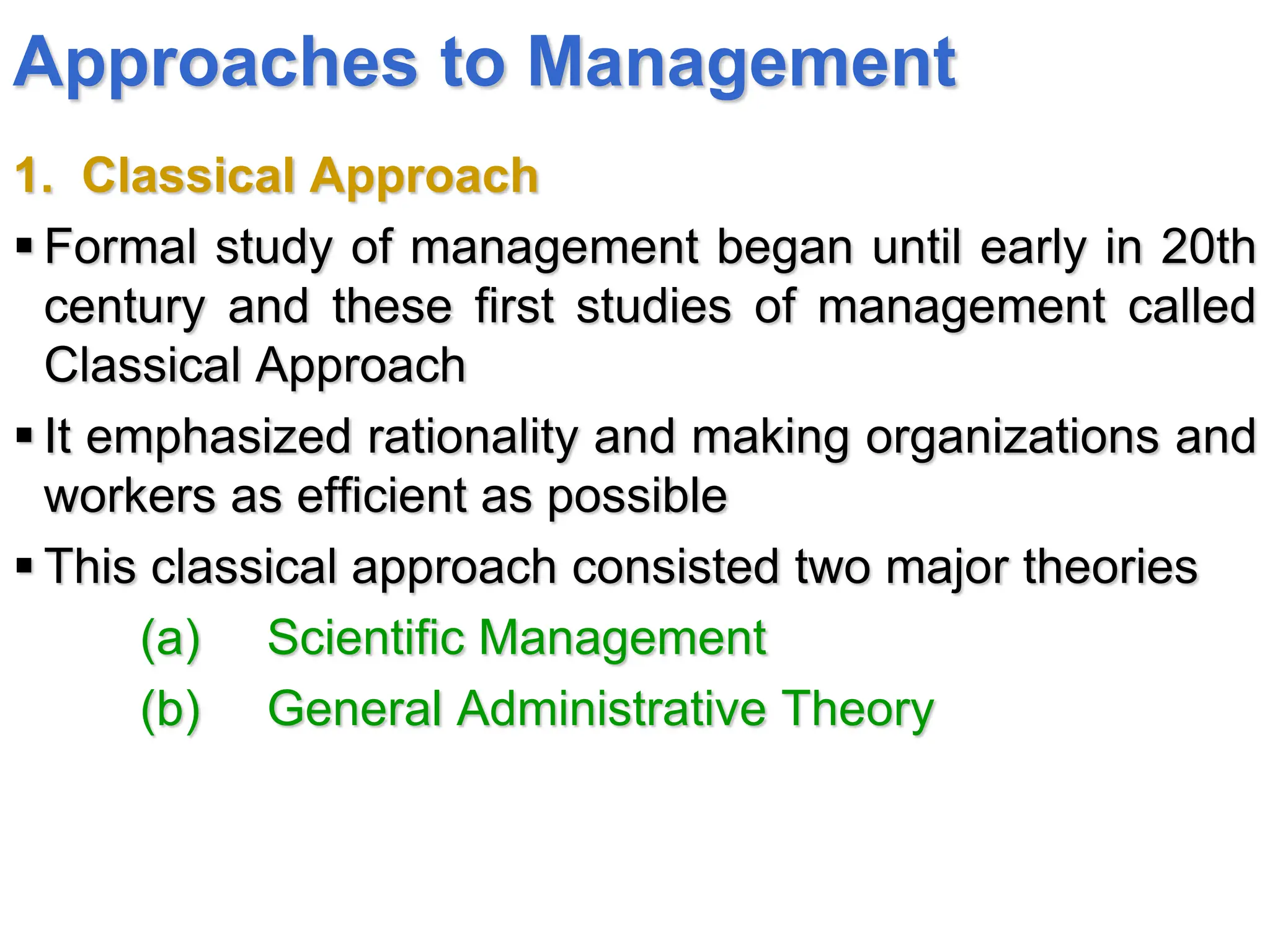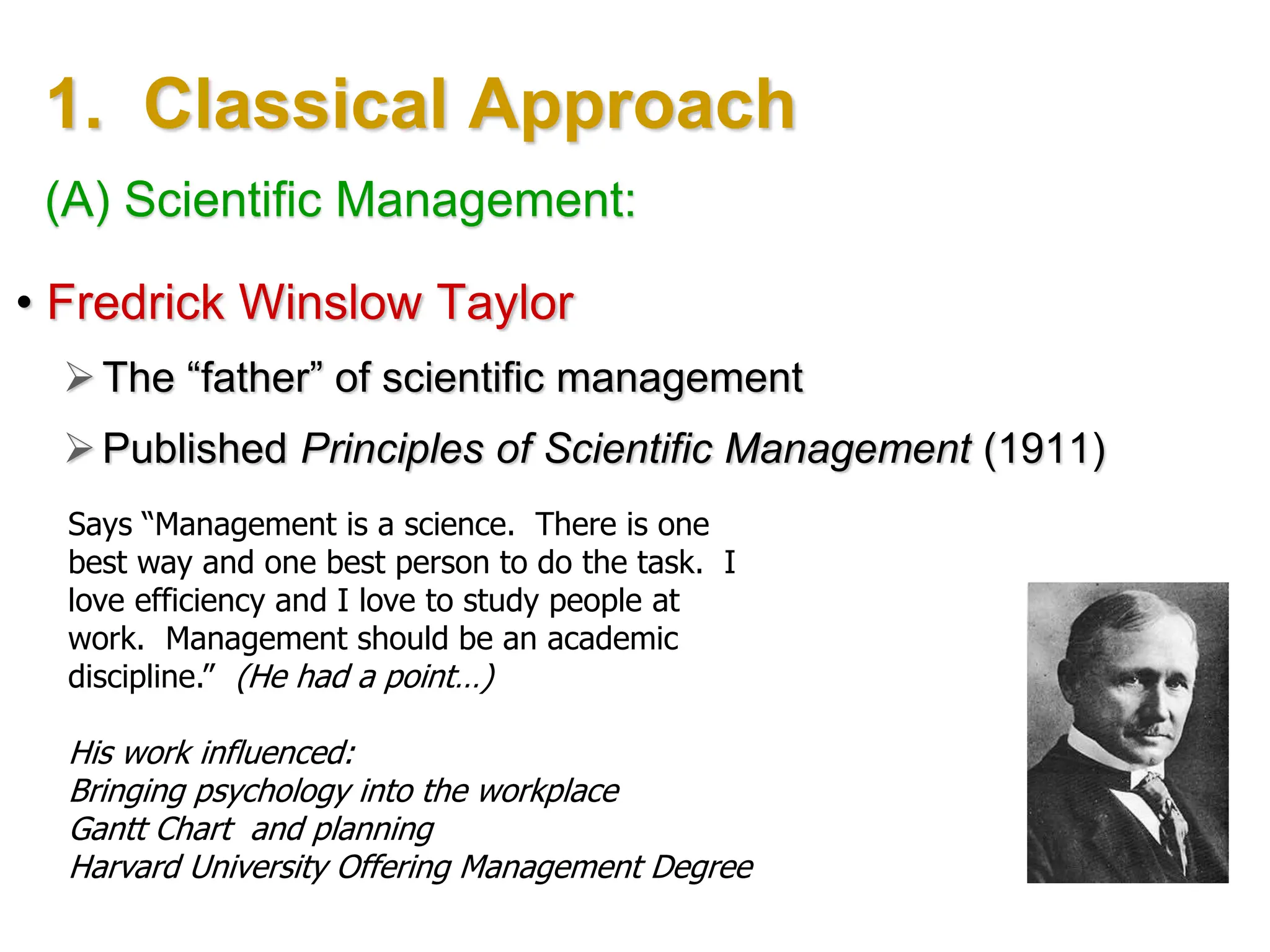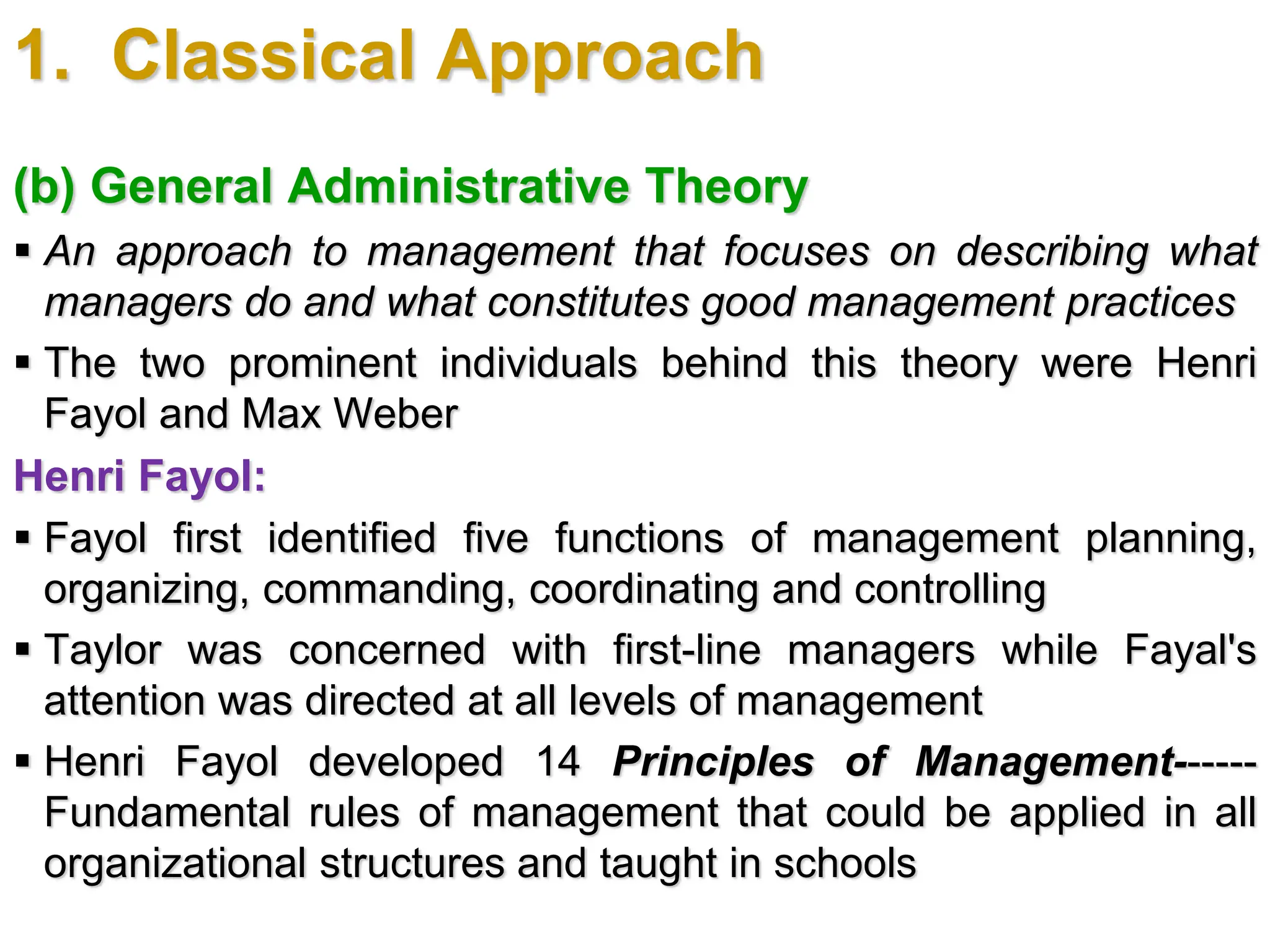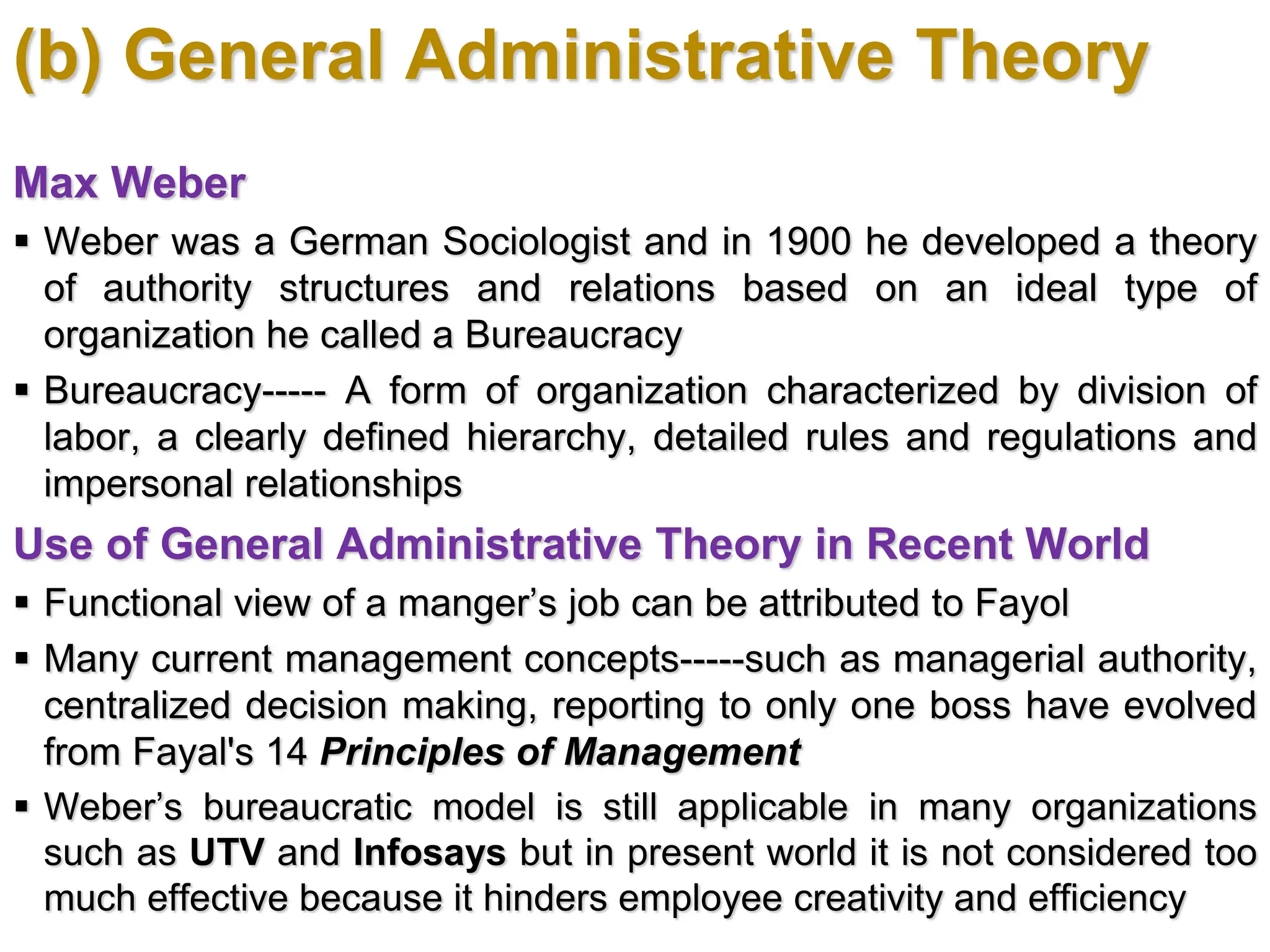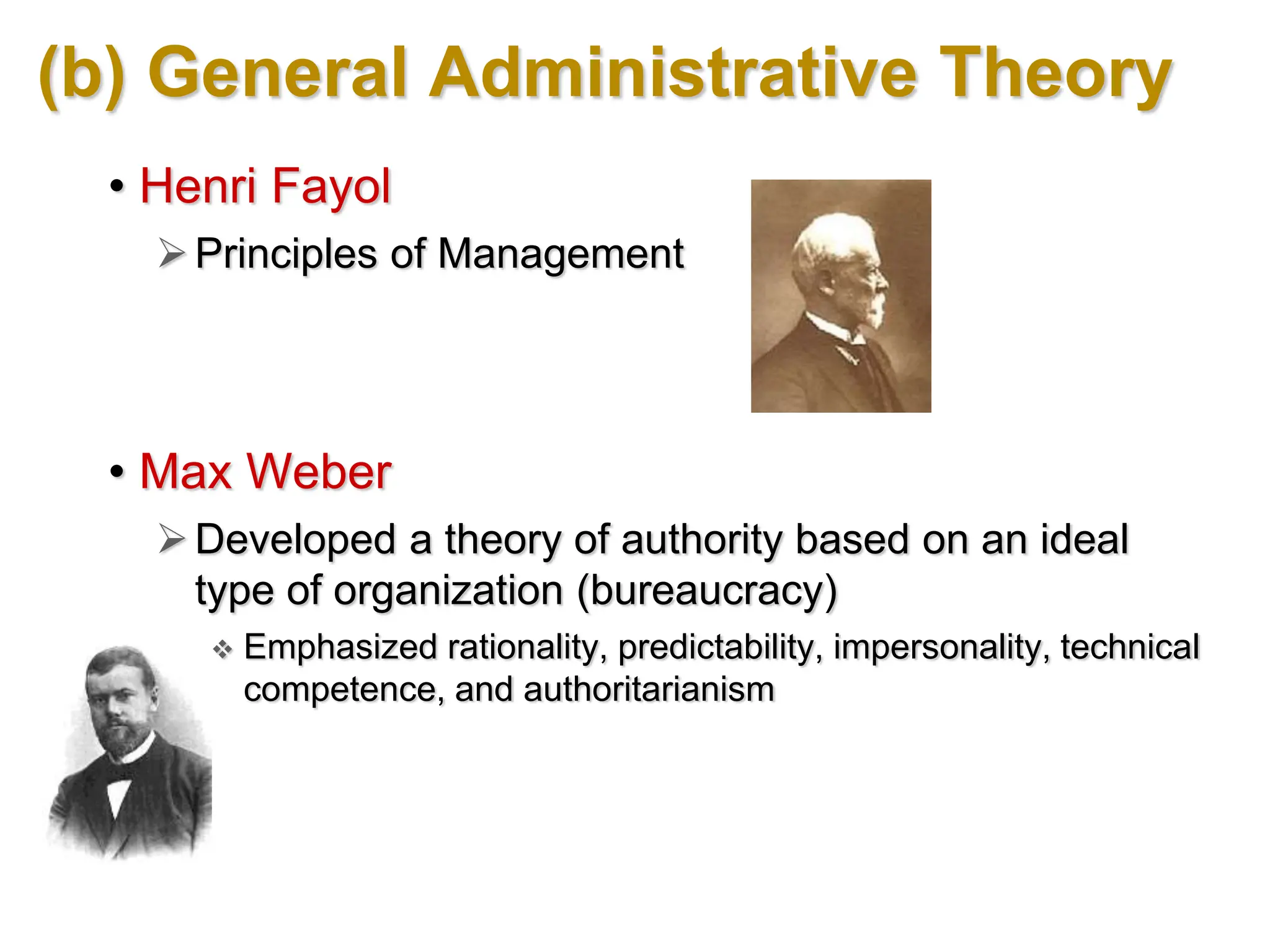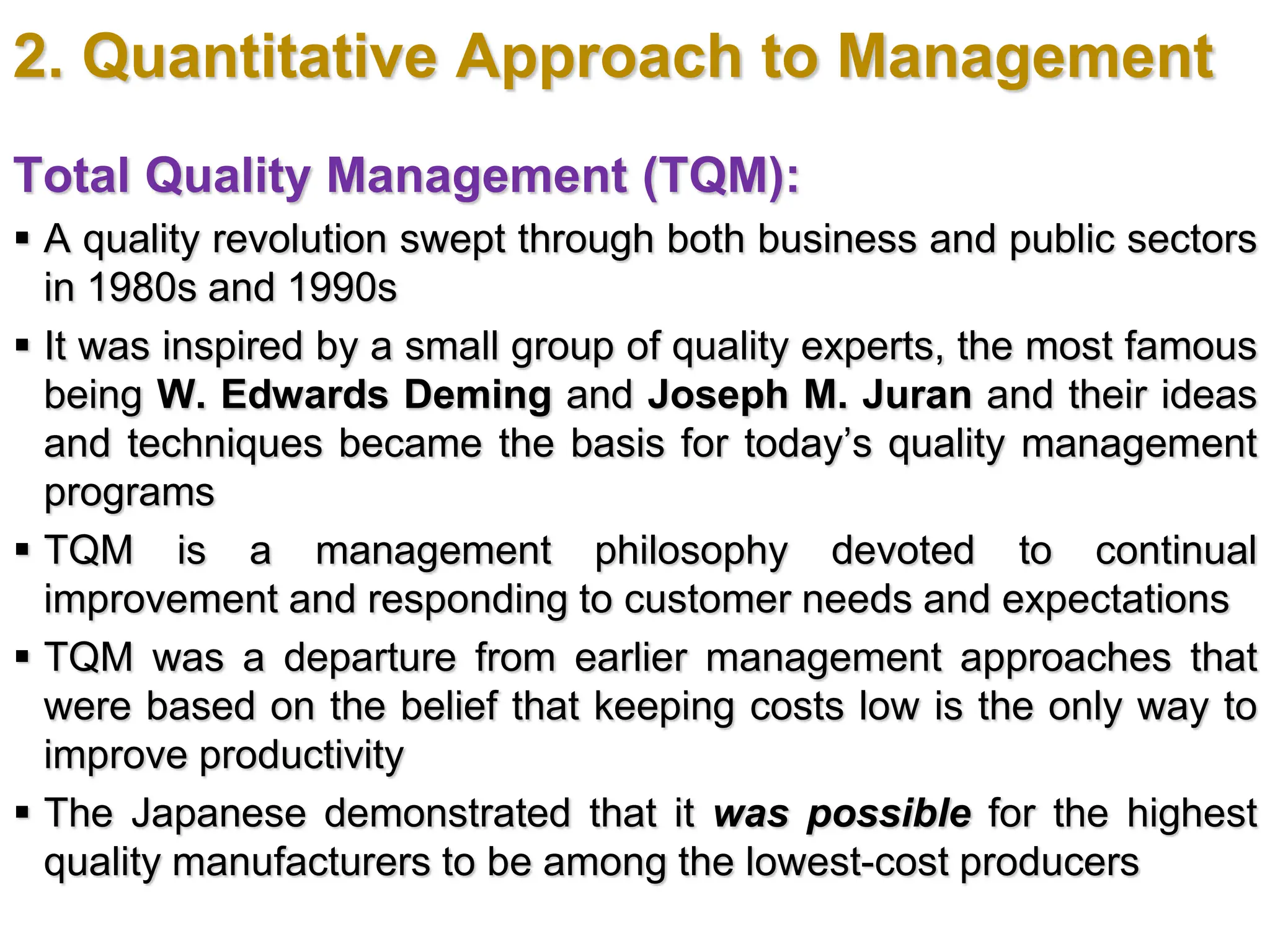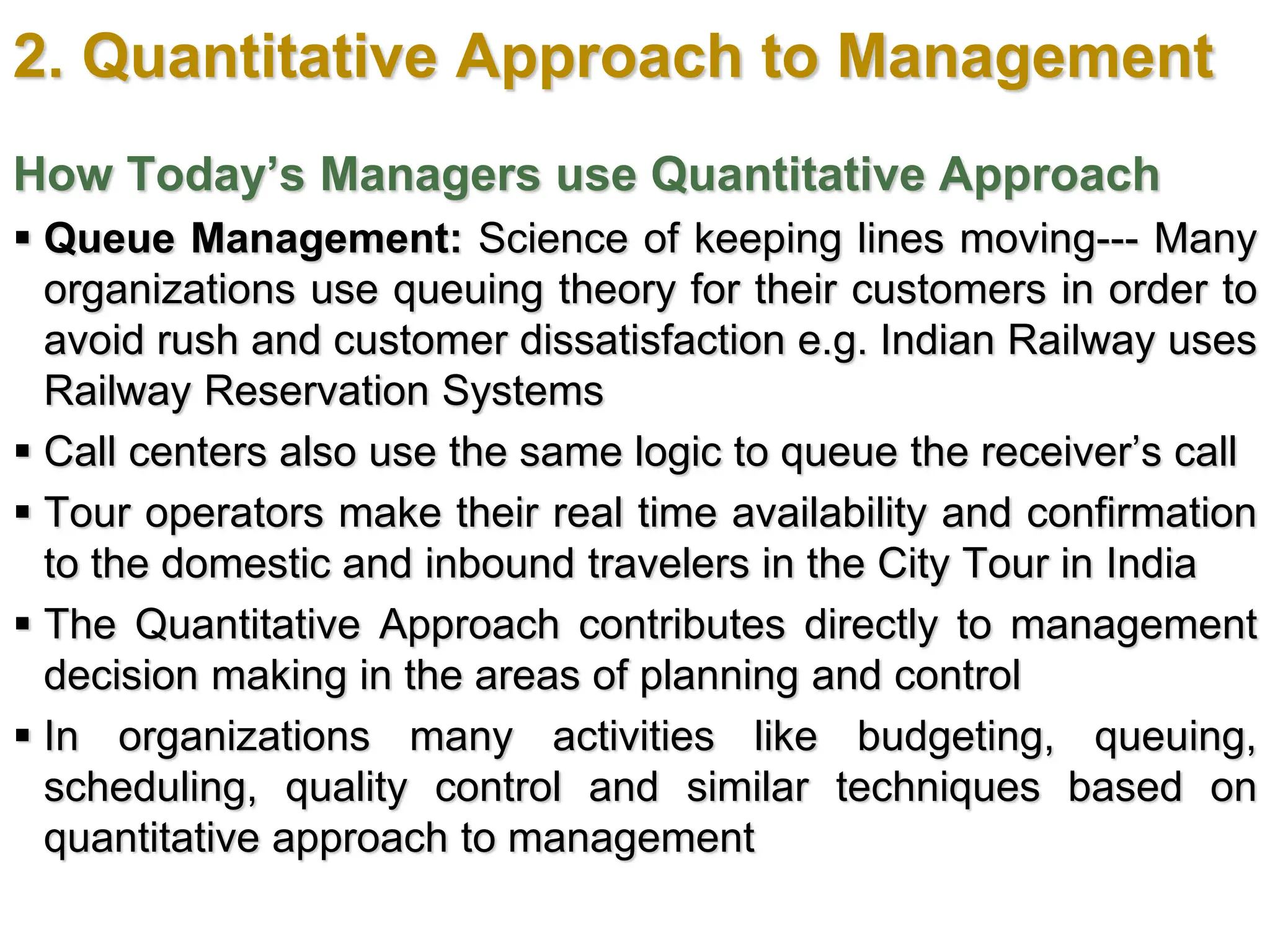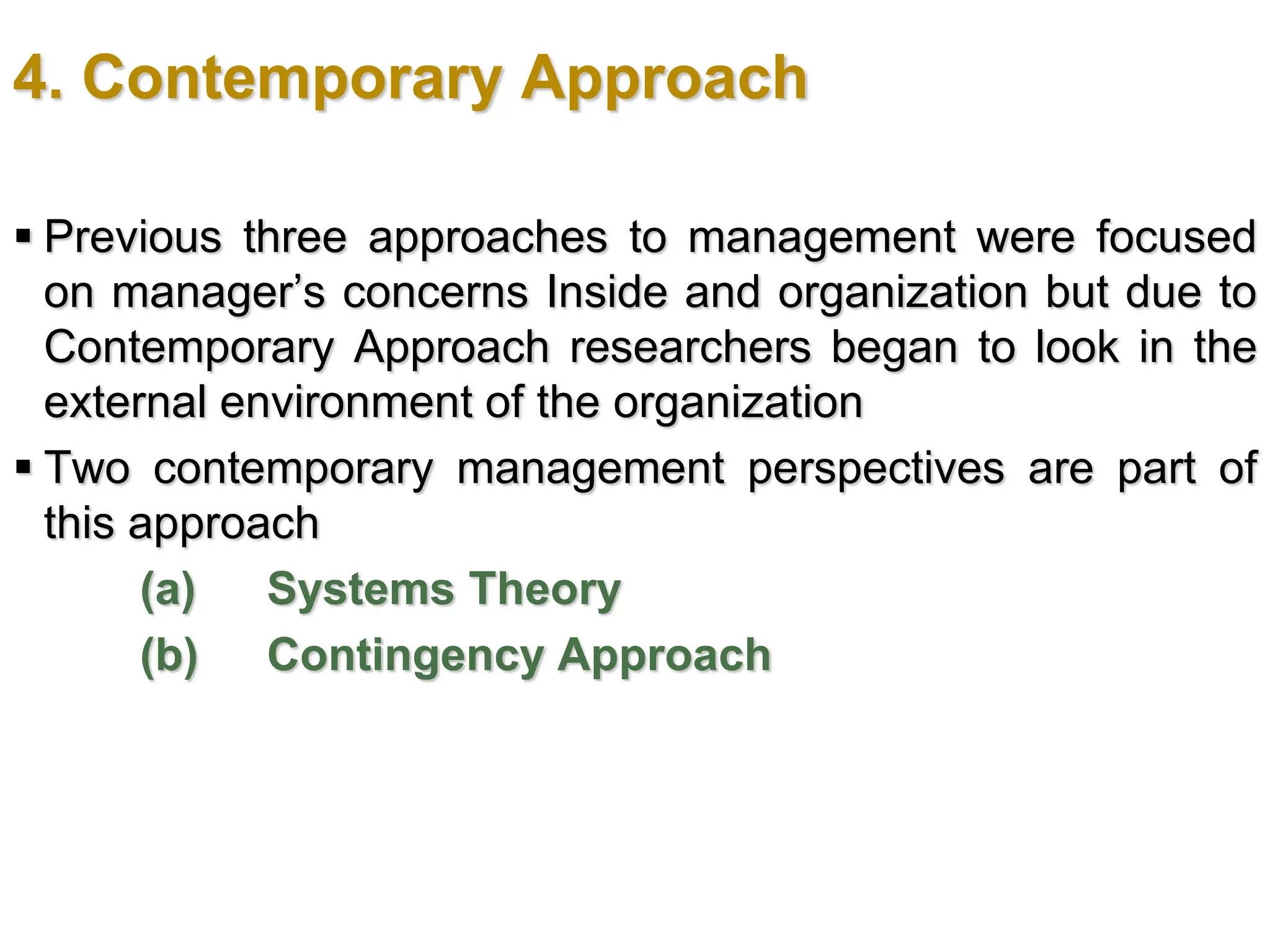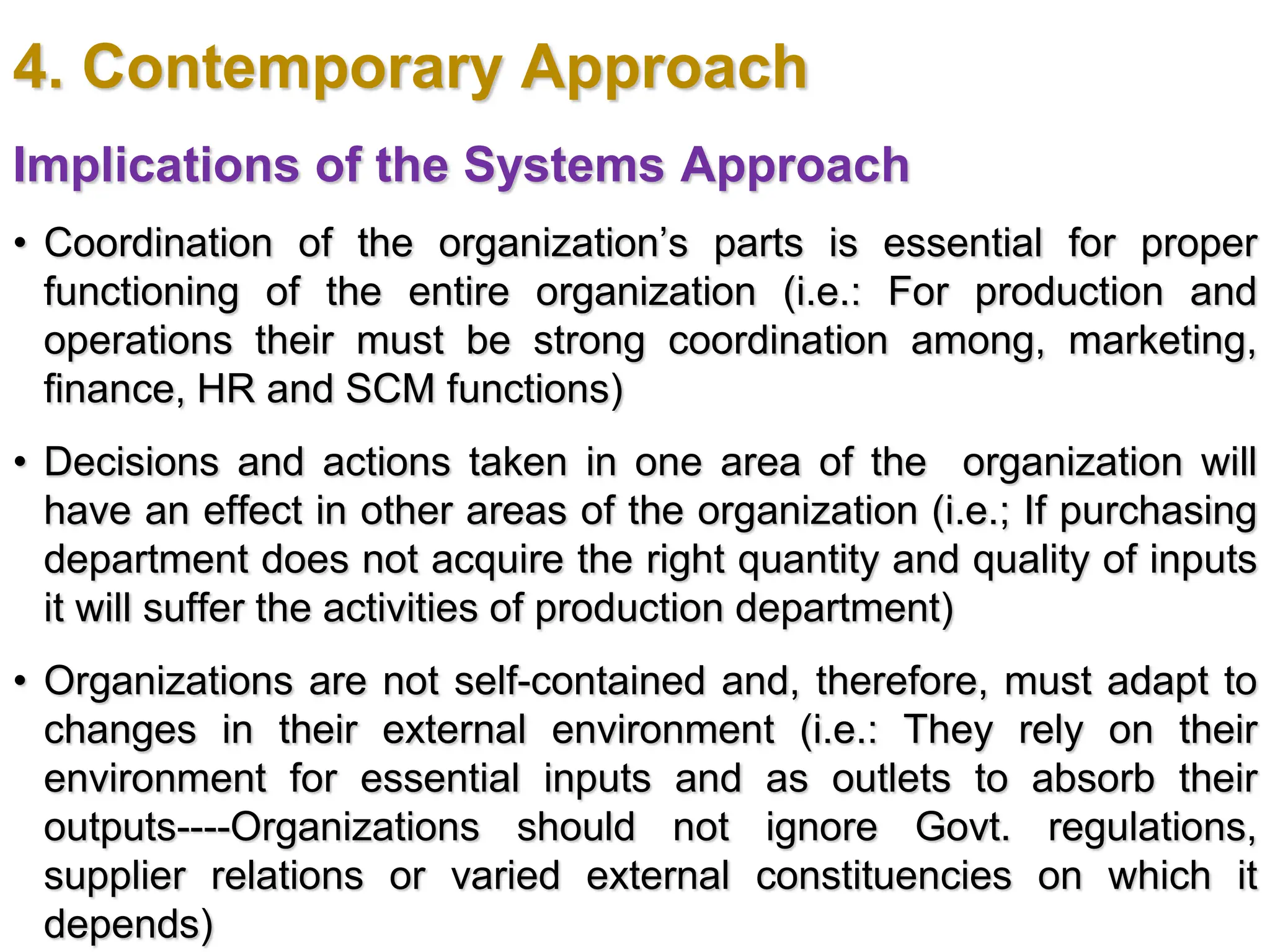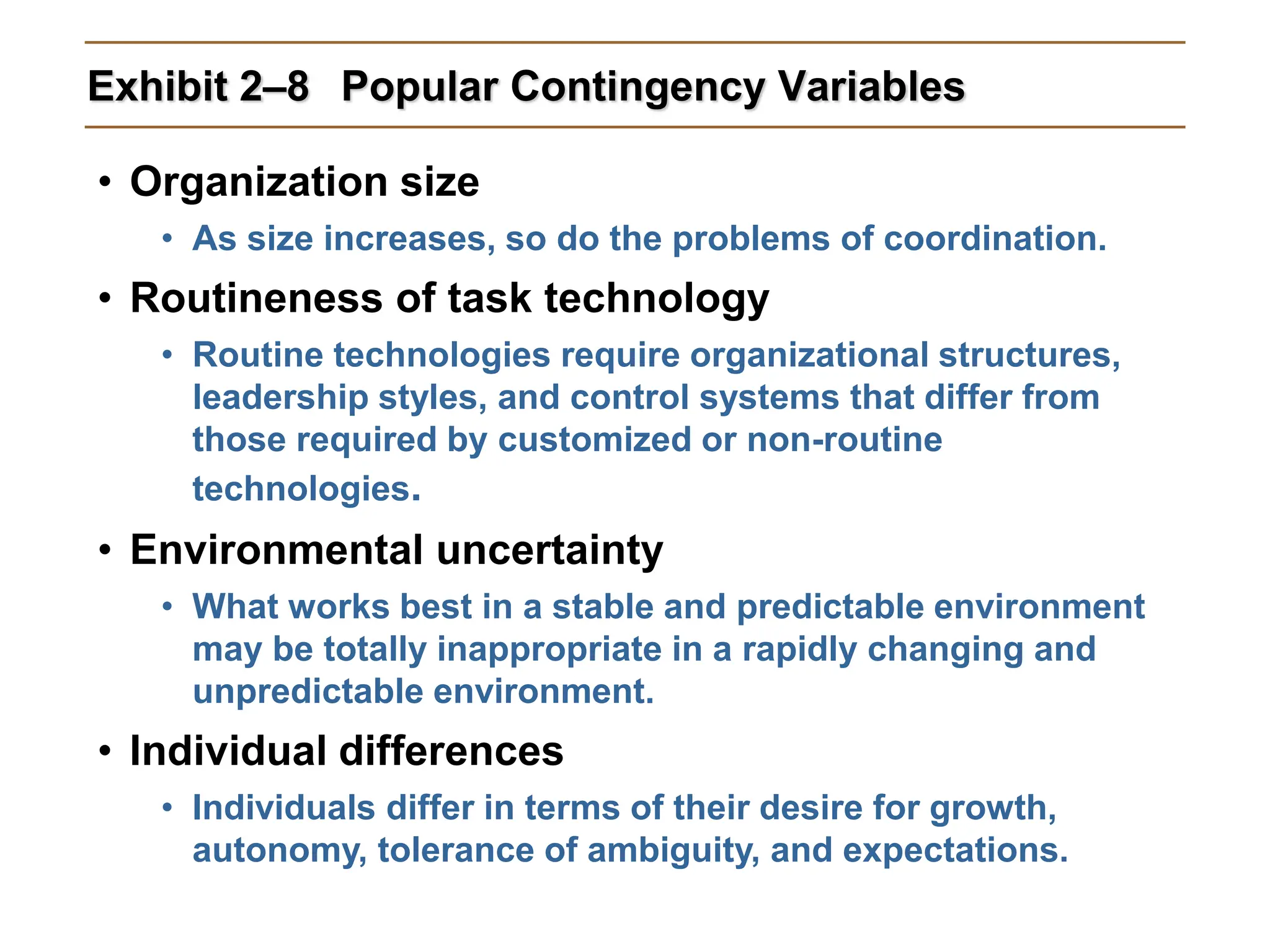The document provides a comprehensive overview of the history of management and its various approaches, including classical, quantitative, behavioral, and contemporary methods. It highlights key figures like Frederick Winslow Taylor and Henri Fayol, discusses theories such as scientific management and organizational behavior, and emphasizes the importance of adapting management practices to external environments through systems and contingency approaches. Overall, the content illustrates how management theories have evolved to address the complexity of organizational dynamics and employee relations.




